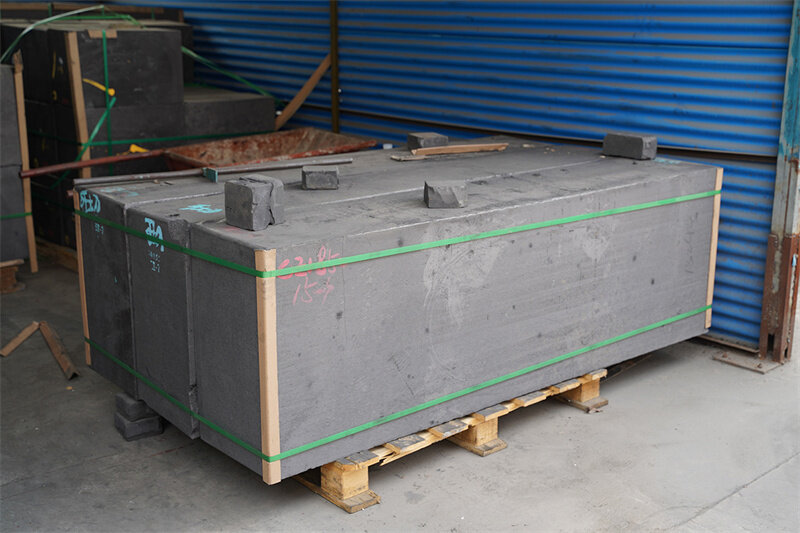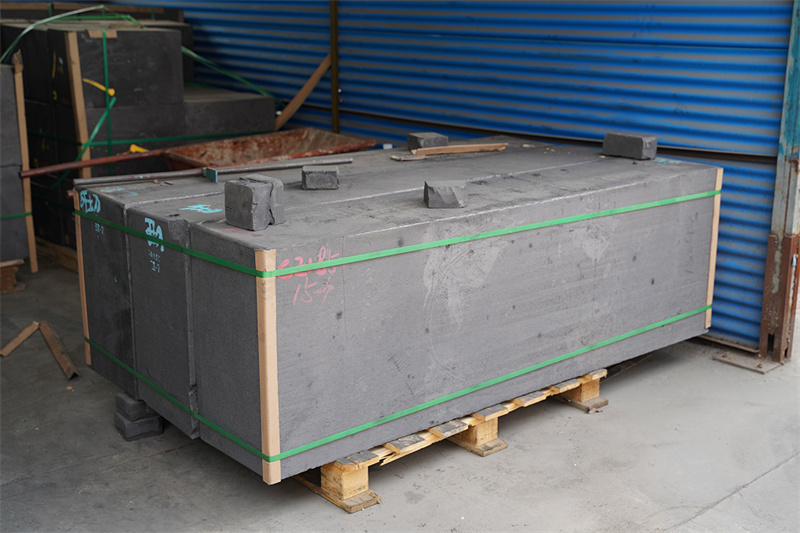In the world of steelmaking, graphite electrodes play a pivotal role as the primary heating elements in electric arc furnaces (EAFs). These specialized carbon-based conductors are designed to withstand extreme temperatures and facilitate the melting of scrap metal, a crucial step in the recycling and production of new steel.
Graphite electrodes are cylindrical rods composed of a unique blend of materials that provide exceptional thermal and electrical conductivity. Their ability to generate and sustain high temperatures, often exceeding 1600°C (2912°F), makes them indispensable in the EAF steelmaking process.
What are Graphite Electrodes?
To address the core query "what is graphite electrode" upfront: Graphite electrodes are cylindrical carbon rods used as heating elements in electric arc furnaces for melting scrap metal to produce new steel. They can withstand extreme temperatures over 1600°C due to their unique composition and manufacturing process.
Composition and Manufacturing
The manufacturing of graphite electrodes involves a meticulous process that combines carefully selected raw materials and advanced production techniques. The primary components are:
-
Petroleum Coke and Needle Coke: These carbon-rich materials serve as the primary ingredients, providing the necessary carbon structure and conductivity.
-
Coal Pitch: Acting as a binder, coal pitch holds the carbon particles together and imparts mechanical strength to the electrode.
The manufacturing process typically involves the following steps:
-
Mixing and Kneading: The raw materials are precisely measured and mixed, forming a homogeneous blend known as the "green paste."
-
Extrusion: The green paste is extruded through a die, forming the desired cylindrical shape of the electrode.
-
Baking and Graphitization: The extruded electrodes undergo a series of heating processes, including baking at high temperatures to remove volatile components and graphitization at temperatures exceeding 2800°C (5072°F) to enhance the crystalline structure and electrical conductivity.
-
Impregnation: To increase density and strength, the baked electrodes are impregnated with additional pitch, which fills any remaining pores or voids.
-
Final Processing: The electrodes undergo final machining, inspection, and quality control checks before being shipped to steel mills for use in EAFs.
Types of Graphite Electrodes
Graphite electrodes are classified into several categories based on their properties and intended applications. The most common types include:
-
Regular Power (RP) Electrodes: These are the most basic and economical electrodes, suitable for general steelmaking operations.
-
High-Power (HP) Electrodes: Designed for higher current densities and improved thermal conductivity, HP electrodes offer enhanced performance and productivity.
-
Ultra-High Power (UHP) Electrodes: Representing the pinnacle of graphite electrode technology, UHP electrodes boast exceptional thermal and electrical conductivity, enabling higher power input and faster melting rates in EAFs.
-
Super Ultra-High Power (SUHP) Electrodes: The latest innovation in graphite electrode technology, SUHP electrodes offer unparalleled performance, allowing for even higher power input and increased productivity in modern EAFs.
Role in Electric Arc Furnaces
The primary function of graphite electrodes in electric arc furnaces is to generate and sustain the intense heat required to melt scrap metal, typically a mixture of steel, iron, and other ferrous materials.
The EAF process involves the following steps:
-
Charging: Scrap metal is loaded into the furnace, which is lined with refractory materials to withstand the extreme temperatures.
-
Electrode Positioning: Graphite electrodes, typically three in number, are lowered into the furnace and positioned above the scrap metal charge.
-
Arc Initiation: A powerful electrical current is passed through the electrodes, creating an electric arc that generates temperatures exceeding 3000°C (5432°F).
-
Melting: The intense heat from the electric arc melts the scrap metal, forming a molten pool at the bottom of the furnace.
-
Refining: Additional materials, such as lime and carbon, may be added to the molten metal to adjust its chemical composition and remove impurities.
-
Tapping: Once the desired composition is achieved, the molten steel is tapped (poured) from the furnace into a ladle for further processing or casting into various steel products.
Throughout this process, the graphite electrodes play a crucial role in maintaining the high temperatures required for efficient melting and refining of the scrap metal. Their exceptional thermal and electrical conductivity, combined with their ability to withstand extreme conditions, make them an essential component in the EAF steelmaking process.
Advantages of Graphite Electrodes
Graphite electrodes offer several advantages that contribute to their widespread use in electric arc furnaces:
-
High Thermal Conductivity: Graphite's unique crystalline structure allows for efficient heat transfer, enabling the electrodes to generate and sustain the high temperatures required for melting scrap metal.
-
Electrical Conductivity: The delocalized electrons in graphite's structure facilitate excellent electrical conductivity, allowing for the efficient transfer of electrical energy to generate the intense heat required in EAFs.
-
Resistance to High Temperatures: Graphite electrodes can withstand temperatures exceeding 3000°C (5432°F) without significant degradation, making them suitable for the extreme conditions within electric arc furnaces.
-
Chemical Inertness: Graphite is highly resistant to chemical reactions, minimizing the risk of contamination or unwanted reactions with the molten metal or furnace atmosphere.
-
Durability and Longevity: With proper maintenance and handling, graphite electrodes can have a long service life, contributing to cost-effectiveness and reduced downtime in steel mills.
-
Recyclability: Used graphite electrodes can be recycled and reprocessed, aligning with sustainable practices and reducing waste in the steelmaking industry.
Environmental Considerations
While graphite electrodes offer numerous advantages in steelmaking, their production and use also raise environmental concerns that must be addressed:
-
Carbon Emissions: The manufacturing process of graphite electrodes involves the use of carbon-rich materials, which can contribute to greenhouse gas emissions if not properly managed.
-
Energy Consumption: The high temperatures required for baking and graphitization during electrode production are energy-intensive, potentially contributing to a significant carbon footprint.
-
Waste Management: Proper disposal or recycling of used graphite electrodes is crucial to minimize environmental impact and promote sustainable practices within the steel industry.
To mitigate these concerns, steel mills and electrode manufacturers are continuously exploring ways to improve energy efficiency, reduce emissions, and implement circular economy principles in their operations. This includes investing in renewable energy sources, optimizing production processes, and developing advanced recycling technologies for used electrodes.
Future Developments
The graphite electrode industry is continuously evolving to meet the growing demands of the steel industry and address environmental challenges. Some of the key areas of development include:
-
Improved Electrode Performance: Researchers are exploring new materials and manufacturing techniques to enhance the thermal and electrical conductivity of graphite electrodes, enabling higher power input and faster melting rates in EAFs.
-
Sustainable Production: Efforts are underway to reduce the carbon footprint of graphite electrode production through the use of renewable energy sources, energy-efficient processes, and the incorporation of recycled materials.
-
Advanced Recycling Technologies: Innovative recycling methods are being developed to recover and reuse valuable materials from used graphite electrodes, promoting a circular economy and reducing waste.
-
Digital Transformation: The integration of digital technologies, such as real-time monitoring and predictive analytics, is expected to optimize electrode performance, improve process efficiency, and enhance overall productivity in steel mills.
-
Alternative Materials: While graphite remains the predominant material for electrodes, researchers are exploring alternative materials, such as carbon nanotubes or graphene, that could potentially offer superior properties and performance in EAFs.
As the demand for steel continues to grow, driven by urbanization and infrastructure development, the role of graphite electrodes in enabling efficient and sustainable steelmaking processes will become increasingly crucial.
Conclusion
Graphite electrodes are essential components in the electric arc furnace steelmaking process, serving as the primary heating elements responsible for melting scrap metal. Their unique composition, combining carbon-rich materials and advanced manufacturing techniques, endows them with exceptional thermal and electrical conductivity, enabling the generation of intense heat required for efficient steel production.
From regular power electrodes to the latest super ultra-high power variants, these specialized conductors play a pivotal role in meeting the ever-increasing demands of the steel industry. As technology advances and sustainability concerns gain prominence, the graphite electrode industry is poised to embrace innovative solutions, such as improved performance, sustainable production practices, and advanced recycling technologies.
By understanding the intricacies of graphite electrodes and their crucial role in steelmaking, we can appreciate the significance of this unassuming yet indispensable component in shaping the modern world through the production of one of the most versatile and widely used materials – steel.



_853.jpg)
_867.jpg)
